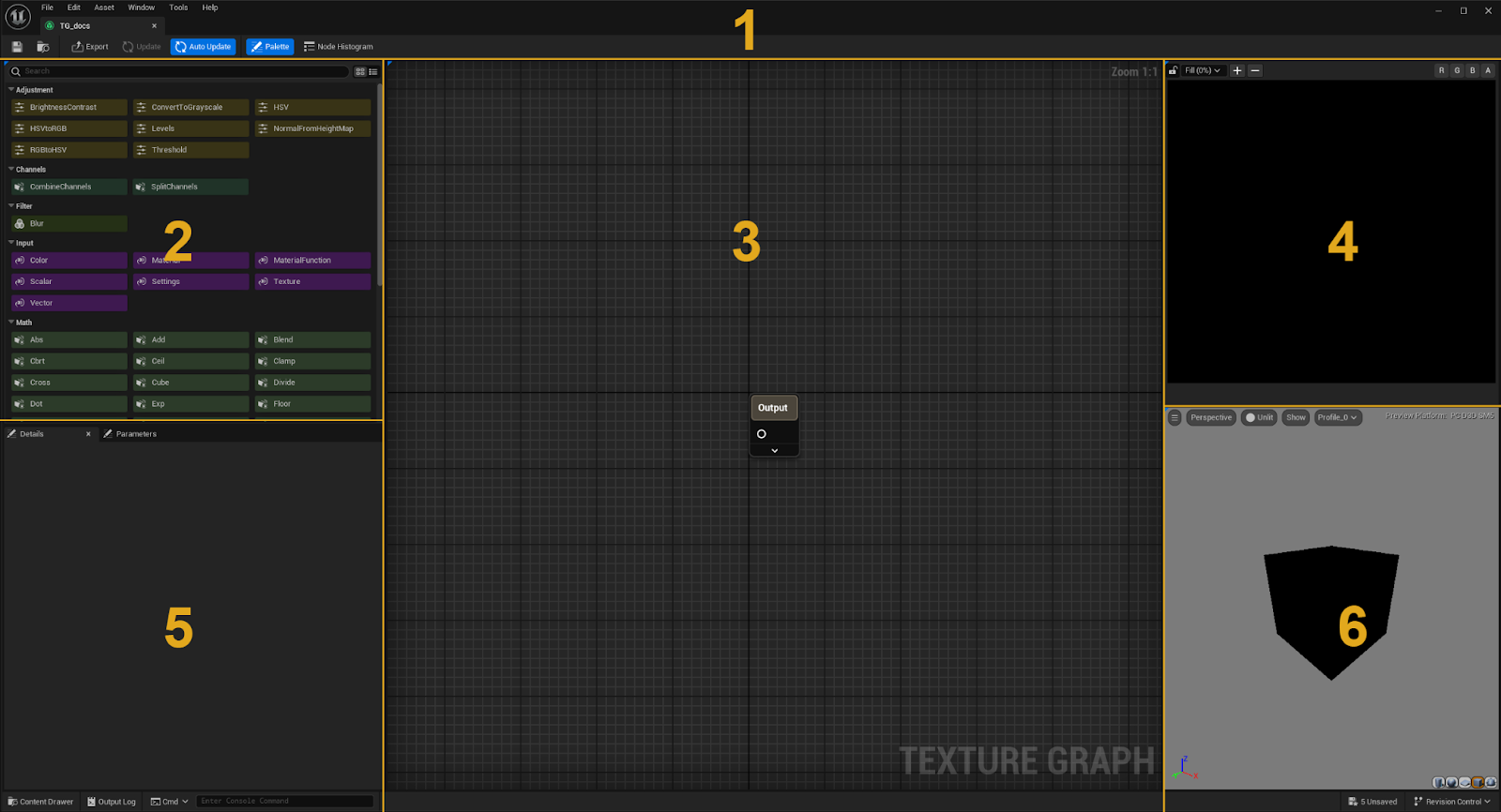Unreal Engine 5.4: What's New?
Discover the game-changing features of Unreal Engine 5.4, from procedural animation with Motion Matching to PCG environments using the Biome Generator.
Unreal Engine 5.4, the newest update to the powerful game development platform, has arrived with a bang. This release introduces a plethora of exciting features and improvements that are set to revolutionize the way designers create animations and interactive experiences. Unreal Engine 5.4 offers an array of tools that empower artists and developers alike. The latest version promises to supercharge creativity and efficiency, enabling creators to bring their visions to life like never before.
Table Of Contents
- Motion Matching
- Modular Control Rigs
- One Click Auto Retargeting
- Other Animation Updates
- Biome Generator
- Texture Graph Editor
- Rendering Improvments
Motion Matching
Unreal Engine 5.4 also introduces a game-changing technology called Motion Matching. This innovative approach to character animation surpasses traditional state machines and blend spaces, offering more natural and responsive character movements. Say goodbye to stiff, robotic animations and hello to lifelike characters that move with fluidity and grace.
Motion Matching utilizes a motion database to dynamically select the best animation frame based on the character's context and predicted location. This results in seamless transitions and realistic traversal without the need for extensive manual animation work. By simply adding varied animations to the motion database, developers can achieve highly polished character performances. It's like having a virtual choreographer that adapts to every situation on the fly.
The beauty of Motion Matching lies in its simplicity and scalability. Animators no longer need to spend countless hours crafting intricate state machines or blending between animations. Instead, they can focus on creating a diverse range of motions that capture the essence of the character. The engine takes care of the rest, intelligently stitching together the most appropriate animations based on the character's actions and environment.
This technology opens up new possibilities for interactive storytelling and immersive gameplay. Characters can now navigate complex environments, interact with objects, and respond to player input with unprecedented realism. Whether it's a hero deftly maneuvering through a bustling city or a villain engaged in a intense combat, Motion Matching ensures that every movement feels authentic and impactful.
Modular Control Rigs
Unreal Engine 5.4 introduces Modular Control Rigs, a system that simplifies the process of rigging and animating characters. These pre-made rigs can be easily added to characters, eliminating the need for extensive programming knowledge. It's a game-changer for animators, enabling them to focus on the creative aspects of character animation without getting bogged down in technical complexities.
One Click Auto Retargeting
Additionally, the Auto Retargeter feature allows animators to transfer animations between bipedal characters effortlessly. This means that existing animations, such as those created for MetaHumans, can be applied to new characters with minimal effort. The Auto Retargeter intelligently adapts the animations to the target character's proportions and skeletal structure, saving animators countless hours of manual work.
Other Animation Updates
The Sequencer, Unreal Engine's timeline-based animation tool, has also received improvements in version 5.4. The updated interface enhances readability and usability, making it easier for animators to create and edit cinematic sequences. With streamlined workflows and intuitive controls, animators can bring their characters to life with greater efficiency and precision.
Moreover, Unreal Engine 5.4 introduces new animation compression techniques that reduce memory usage and improve performance. This means that characters can have more complex and detailed animations without sacrificing runtime efficiency. Whether it's a large-scale battle scene or an intimate character moment, the optimized animation system ensures smooth and responsive playback.
Biome Generator
Creating vast, immersive open worlds becomes a breeze with Unreal Engine 5.4's Biome Generator. This tool harnesses the power of Procedural Content Generation (PCG) to automatically generate diverse and realistic environments. Say goodbye to the tedious task of manually placing every tree, rock, and building. With the Biome Generator, developers can focus on the big picture while the engine takes care of the details.
With the Biome Generator, developers can define sets of rules and assets for different biomes, such as forests, deserts, and snowy mountains. The tool then procedurally places these elements, resulting in unique and believable worlds. Customization options allow for fine-tuning and control over the generated content, ensuring the perfect balance between automation and artistic vision.
The Biome Generator goes beyond mere landscape generation. It can populate the world with foliage, rocks, water bodies, and even structures. By leveraging the power of procedural generation, developers can create expansive environments that feel organic and alive. From dense jungles teeming with vegetation to barren wastelands dotted with ruins, the Biome Generator brings worlds to life with unparalleled efficiency.
Moreover, the Biome Generator integrates seamlessly with other Unreal Engine systems, such as the Foliage tool and the Landscape system. This allows for further customization and refinement of the generated content. Developers can easily paint additional details, sculpt terrain, and add bespoke elements to enhance the visual fidelity and gameplay possibilities.
Texture Graph Editor
The Texture Graph Editor is another significant addition to Unreal Engine 5.4. This node-based tool enables artists to create complex textures and materials entirely within the engine. By combining procedural patterns, noise, and mathematical operations, designers can generate intricate textures without relying on external software or photo scans. It's a powerful toolset that puts texture creation at the fingertips of every artist.

The Texture Graph Editor seamlessly integrates with Nanite Displacement, introduced in Unreal Engine 5, allowing for highly detailed and realistic surfaces. With the ability to procedurally generate textures, roughness, normal, and height maps, artists can achieve stunning visual fidelity while streamlining their workflow. The node-based interface offers a intuitive way to build complex textures step by step, with real-time previews that provide instant feedback.
One of the key advantages of the Texture Graph Editor is its flexibility. Artists can create reusable texture templates that can be easily modified and adapted to different assets. This promotes consistency and efficiency across projects, as textures can be quickly iterated upon and shared among team members. Moreover, the procedural nature of the textures ensures that they can be seamlessly tiled and scaled without visible seams or repetition.
The Texture Graph Editor also supports the use of external textures and images as inputs. This allows artists to combine procedural elements with bespoke textures, enabling a wide range of creative possibilities. Whether it's adding real-world details to a procedurally generated material or blending hand-painted textures with procedural patterns, the Texture Graph Editor provides the tools to achieve the desired look and feel.
Rendering Improvments
Unreal Engine 5.4 brings significant performance optimizations to the table. The City Sample demo, a showcase of the engine's capabilities, demonstrated a 25% decrease in GPU time and a 50% reduction in render thread time. These improvements translate to higher frame rates and smoother experiences for end-users. It's a testament to the engine's ongoing commitment to pushing the boundaries of performance.
The performance optimizations extend beyond graphics rendering. The engine's audio system has also received attention, with improvements in spatial audio processing and dynamic sound occlusion. This results in more believable and immersive soundscapes that react to the player's actions and environment. Whether it's the echoes of footsteps in a cavernous dungeon or the muffled sounds of a distant explosion, Unreal Engine 5.4 deliver, hardware ray tracing has seen a two-fold speed increase in certain environments, allowing for more realistic lighting and shadows at a targeted 60 frames per second. This means that developers can create stunningly realistic visuals without compromising on performance. From glistening reflections on wet surfaces to accurate shadows cast by dynamic lights, ray tracing in Unreal Engine 5.4 takes immersion to new heights.vers audio that matches the visual fidelity.
In addition to the core engine optimizations, Unreal Engine 5.4 introduces new tools and workflows that streamline development processes. The updated Profiling tools provide deeper insights into performance bottlenecks, allowing developers to identify and optimize critical areas of their projects. The enhanced Blueprints visual scripting system makes it easier to create complex gameplay mechanics and interactions without diving into code.
FAQ (Frequently Asked Questions)
Q: How does Motion Matching improve character animation in Unreal Engine 5.4?
A: Motion Matching is a technology that revolutionizes character animation by dynamically selecting the best animation frame based on the character's context and predicted location. It results in more natural and responsive character movements compared to traditional state machines and blend spaces.
Q: What is the Biome Generator in Unreal Engine 5.4 used for?
A: The Biome Generator in Unreal Engine 5.4 is a tool that utilizes Procedural Content Generation (PCG) to automatically generate diverse and realistic environments. Developers can define rules and assets for different biomes, and the tool procedurally places these elements to create unique and believable worlds.
Q: How does the Texture Graph Editor streamline material creation in Unreal Engine 5.4?
A: The Texture Graph Editor is a node-based tool in Unreal Engine 5.4 that allows artists to create complex textures and materials entirely within the engine. By combining procedural patterns, noise, and mathematical operations, designers can generate intricate textures without relying on external software or photo scans.
Q: What performance optimizations can be expected in Unreal Engine 5.4?
A: Unreal Engine 5.4 brings significant performance optimizations, including a 25% decrease in GPU time and a 50% reduction in render thread time, as demonstrated in the City Sample demo. Additionally, hardware ray tracing has seen a two-fold speed increase in certain environments, targeting 60 frames per second.
Summary
In conclusion, Unreal Engine 5.4 stands as a testament to the relentless innovation driving the field of game development forward. With its impressive suite of features and enhancements, it empowers creators to push the boundaries of their imagination and craft immersive, breathtaking experiences.
To get notified of upcoming posts on Unreal Engine, I invite you to subscribe to our newsletter:
And if you are just getting started learning Unreal Engine, have a look at the Unreal Engine for Beginners Course :



